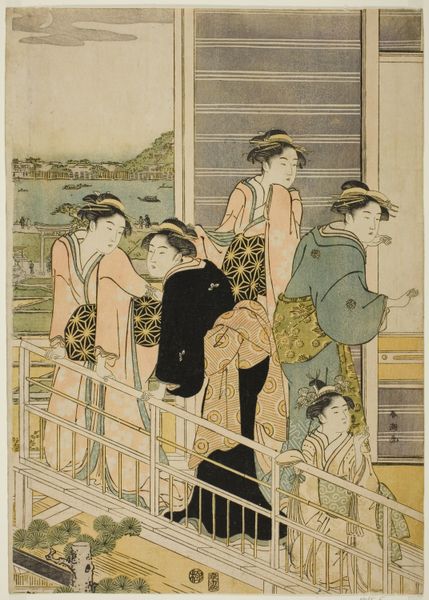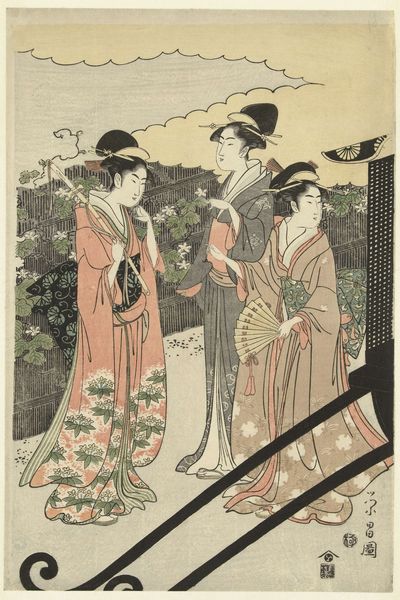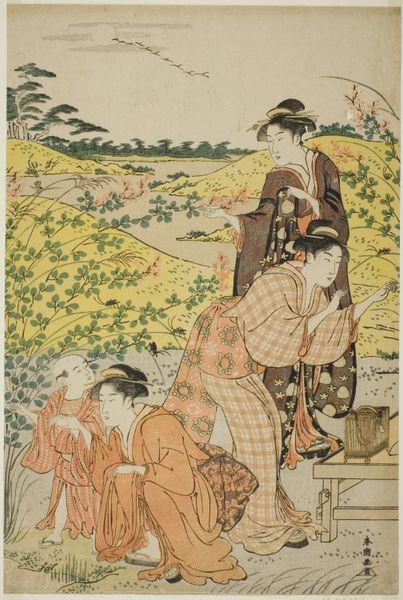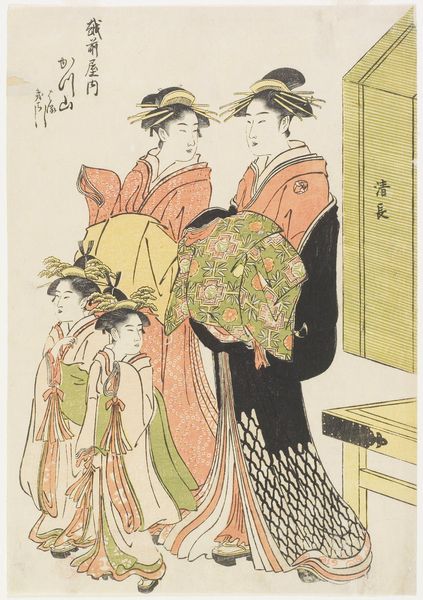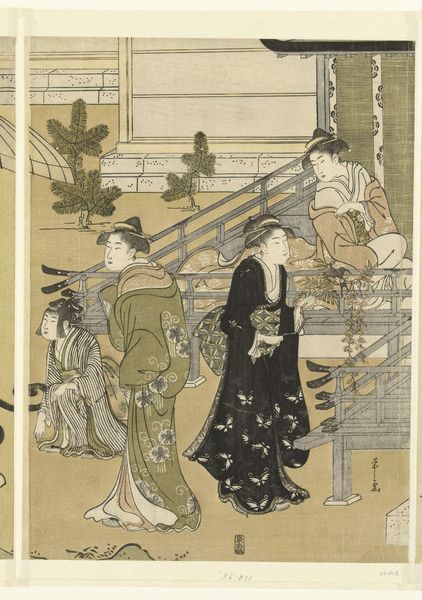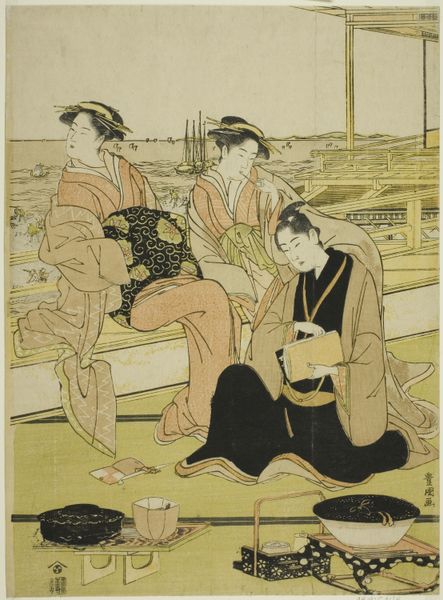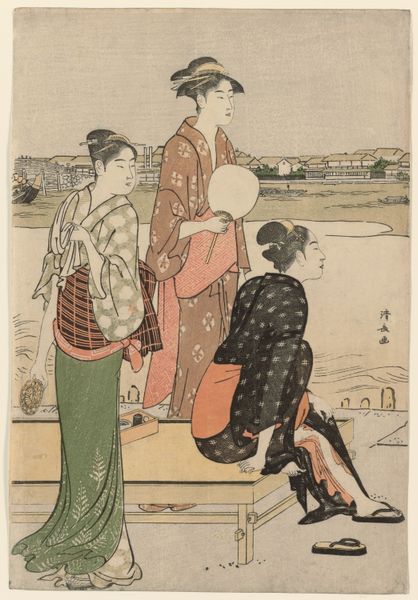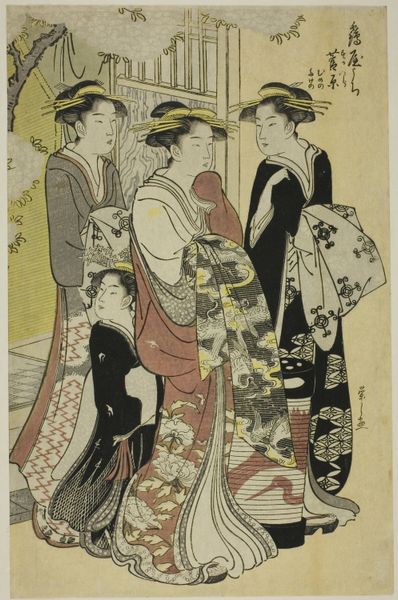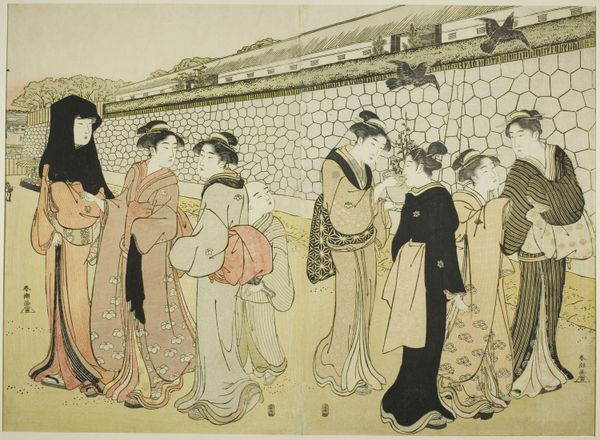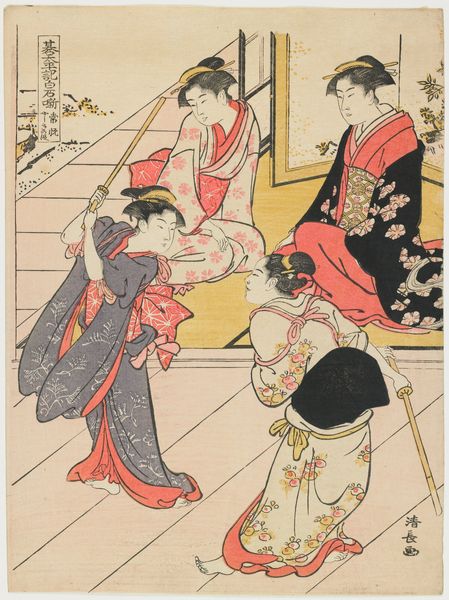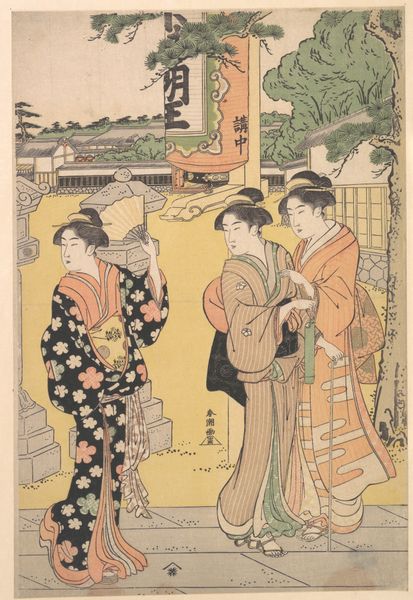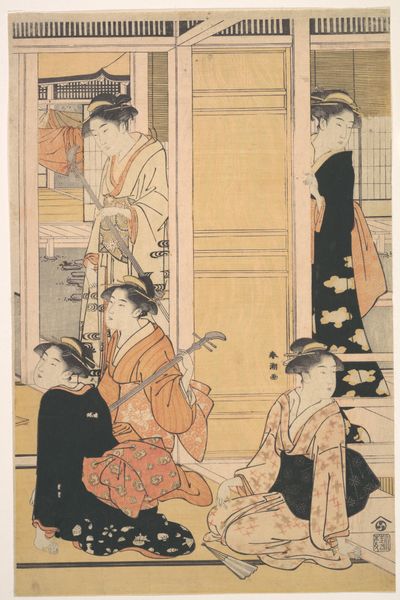
print, textile
#
portrait
# print
#
asian-art
#
textile
#
ukiyo-e
#
figuration
#
genre-painting
Dimensions: 36.6 × 24.7 cm (14 3/8 × 9 11/16 in.)
Copyright: Public Domain
Curator: This woodblock print, "Women on a Balcony of a Yoshiwara Teahouse," by Katsukawa Shunshō, created around the 1780s, is a fascinating example of Ukiyo-e art. The linear design captures the attention, but the subject feels elusive at first glance. Editor: It’s immediately dreamlike to me, a fleeting moment captured in faded colours, as if glimpsed through memory. The palette itself feels restricted, giving it a slightly melancholic air. Curator: Notice the artist's strategic use of line to define form. Look at how the vertical lines of the architecture contrast with the curves of the figures' postures. The patterns on their kimonos create visual texture. It's a delicate dance of geometry and fluidity. Editor: The arrangement of the women on the staircase gives them an enigmatic air. They are clearly situated within a carefully coded environment. Their kimonos with patterns such as cherry blossoms, wheels, and geometric designs likely speak to something much deeper. Cherry blossoms, for instance, hint at mortality. Are we perhaps considering their perceived worth in the society of the Yoshiwara district? Curator: The Ukiyo-e genre often depicted the transient world, celebrating fleeting beauty. This teahouse setting presents a curated stage—and I agree, it seems heavy in suggestion—but from my perspective, the genius is really in the overall design and use of flattening planes and compositional structure. The lines, colors, and shapes themselves express something potent. Editor: The water glimpsed in the background contributes, as water is associated with transition, with reflection... Perhaps the composition overall can be read as a moment of uncertainty and anticipation, heightened by the coded nature of their apparel and the architectural framing device? Curator: I concur; in essence, the success of the artwork lies in the way that visual construction creates something powerful and evocative for a viewer. It is that semiotic and structural play between hard forms and soft details that elevate it above simple portraiture. Editor: Absolutely. Considering the coded symbolism alongside the artist’s choice of composition certainly deepens our appreciation of "Women on a Balcony," granting us access to layers of the painting’s subtle and striking social, personal, and emotional narratives.
Comments
No comments
Be the first to comment and join the conversation on the ultimate creative platform.
